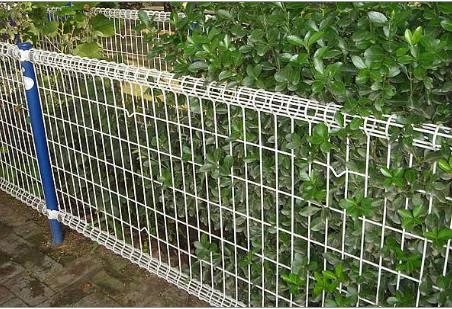Choosing the right wire for gabion baskets can significantly impact the success of your landscaping or construction project. As a seasoned SEO strategist with years of expertise in creating authoritative content, understanding the nuances of wire selection can elevate your knowledge and ensure a reliable installation. This comprehensive guide will delve into the various aspects relating to wires for gabion baskets, emphasizing Experience, Expertise, Authoritativeness, and Trustworthiness (E-E-A-T) to provide a unique and enriching read.

The Materials Behind Gabion Wires
The essence of any gabion basket lies in its wire, and the choice of material profoundly influences durability and performance. Galvanized steel wire is often the go-to option for many due to its anti-corrosive properties and cost-effectiveness. However, advancements in materials have introduced galvanized aluminum, which offers superior corrosion resistance and a longer lifespan. Modern projects may also use Polyvinyl Chloride (PVC) coated wires to provide additional protection against the elements and enhance aesthetic appeal.
Wire Diameter Matters
Gabion baskets' structural integrity largely hinges on wire diameter. Commonly used diameters range from 2mm to 5mm. Choosing the appropriate thickness depends on the anticipated load and environmental conditions. For retaining walls or high-load scenarios, thicker wires provide essential strength and minimize deformation risks. Projects in harsh environments may also benefit from thicker wire gauges, ensuring long-term stability and resilience.

Understanding Mesh Sizes
Mesh size is another critical element that influences the performance of gabion baskets. Smaller mesh sizes facilitate the use of finer fill materials and can create a more refined appearance, suitable for decorative structures. However, larger mesh sizes allow for quicker construction and can accommodate larger stone fill, making them ideal for applications needing rapid deployment or dealing with significant erosion control.
Insights from Real-World Applications
Testimonials and insights from real-world installations strengthen trust in your wire selection. Landscape architects and civil engineers frequently share experiences where selecting the optimal wire type led to successful projects. For instance, during a coastal reinforcement project, using PVC-coated larger diameter wires ensured longevity against the aggressive saline environment, showcasing how tailored wire selection can address specific challenges.
wire for gabion baskets
Expert Recommendations
The expertise involved in selecting wire for gabion baskets cannot be understated. Consulting with manufacturers or seasoned professionals is invaluable as they can provide additional insights based on historical data and field performance. For example, experts might suggest double-twisted wire mesh for enhanced security against unravelling, a crucial factor in areas prone to seismic activity.
Authoritative Guidelines and Standards
Aligning with industry standards and authoritative guidelines is crucial in wire selection for gabion baskets. Agencies and standardization bodies such as ASTM and ISO provide comprehensive criteria on wire specifications, ensuring quality and safety in construction practices. Adhering to these standards not only guarantees compliance but also enhances the structural integrity and longevity of gabion structures.
Trust in Proven Performance
Trustworthiness in the selection process comes from proven performance records and user reviews. Gabion baskets, installed with high-grade wires, have demonstrated effective performance in erosion control, sound barrier construction, and retaining wall setup over decades. Highlighting successful case studies and long-term performance data can instill confidence in choosing the right wire for specific applications.
In closing, the wire used in gabion baskets is not merely a building material; it dictates the project’s longevity and effectiveness. Selecting the appropriate wire involves understanding the local environmental challenges, material properties, and leveraging expert insights to make informed decisions. This investment in knowledge and quality materials pays dividends, ensuring stability and durability in any application, from landscape enhancements to critical infrastructure projects.
 TEL:
+86-13102802206
TEL:
+86-13102802206
 Email:
fencenetting@china.com
Email:
fencenetting@china.com
 Language
Language
 TEL:
+86-13102802206
TEL:
+86-13102802206
 Email:
fencenetting@china.com
Email:
fencenetting@china.com
 Language
Language



